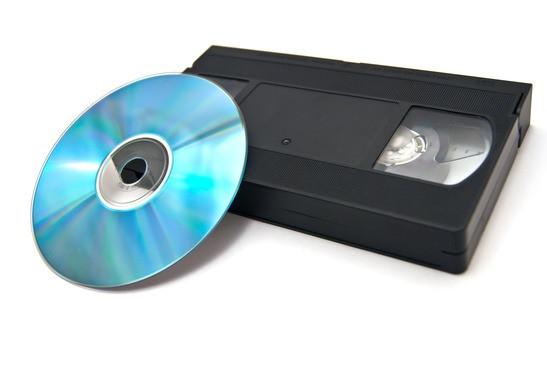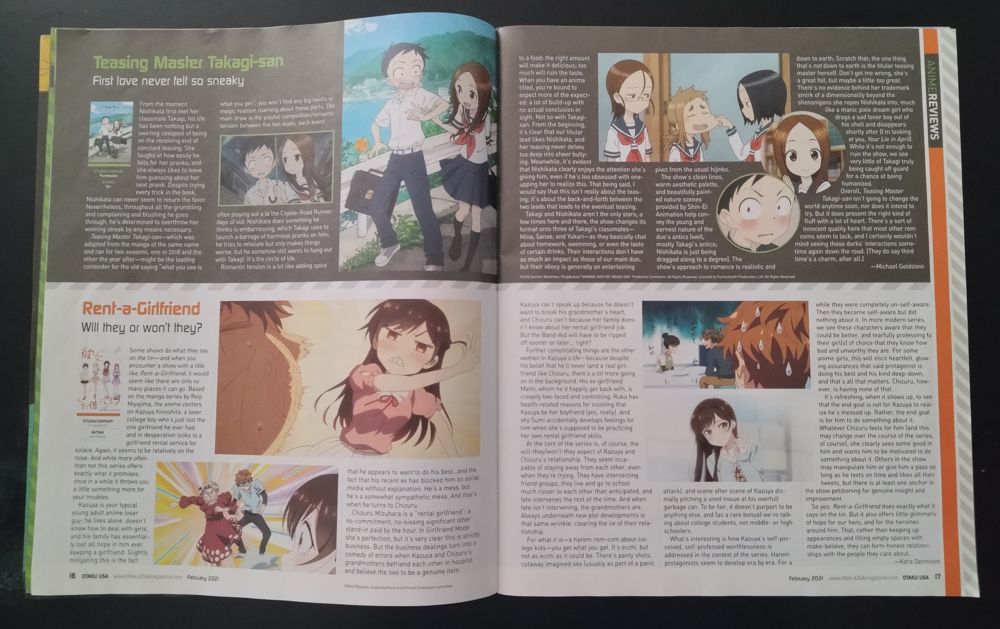
As a librarian, I concern myself with the future of media. Ebooks face off against traditional books, streaming with physical media. The shift toward digital and streaming shapes how we interact with information and stories. A book or movie lover collects books or movies. But what happens when there is nothing to collect? What happens when physical media disappears into backrooms of libraries? Physical media will always be around in some form. I suspect solid-state storage– like old-school video game cartridges–will make a return and challenge disc-based storage. We’ve already seen the Nintendo Switch do this. Cartridges are tougher and save space. But there will be a time when physical media loses out to streaming. For anime fans, today marks that period.
Most anime fans consume anime through streaming services like Crunchyroll, Netflix, Hulu, and various other channels. The convenience and accessibility can’t be matched, and quality sometimes rivals Blu-Ray. Right now, fans can go out and buy series they like on physical media. However, options are limited to the most popular series. As long as profit can be made, companies will continue to print physical media, but streaming allows companies to reduce their risk. They don’t have to risk funds on manufacturing and distributing physical media on anime that lacks popularity. This means less popular titles may see severely limited print runs, if they see runs at all.
James Rolfe of Cinemassacre touches on this problem with his video showcasing his VHS collection. Some movies available on VHS never made it to DVD or streaming. They become lost. Anime that never makes it to physical media can similarly become lost in corporate archives.
Streaming is great for consuming, but it is terrible for collecting. Another side effect of streaming’s rise deals with isolation. Despite increased connectivity via the Internet, physical media offered better social aspects. Browsing a library or video store allowed people to meet. I remember weekly trips to the local video store as a grand event. Part of the fun was asking people for their opinions on this or that movie. Part of the fun was socializing in person and the impromptu invitations watch a movie with a friend. The Internet has made movie night a solo affair. The anime community has benefited from online social tools, but discussing anime online differs from talking in-person. Rolfe discusses the interactions in the video store as part of the culture of the movie. Although you could argue online-discussion is part of the culture of anime.
Physical media offers tactile pleasure streaming cannot. The scent of books, the feel of a movie case, and the savoring of the artwork lend to the experience. The convenience of streaming anytime and anywhere eliminates the feeling of anticipation physical media has. Waiting for a DVD to arrive or for Friday’s video store outing was part of the fun. Anticipation creates appreciation. Think about how excited you are when your anime order arrives from Amazon. As a kid, I experienced that anticipation for Friday’s video run nearly every week. Simulcast streams offer anticipation as well, but older series are available at anytime.
This post is a bit meandering and wears rose-tinted glasses. I enjoy streaming movies, but I also miss the experience of the video store. I collect series I enjoy, but I buy them only after I watch the stream. There is a distinct lack of discovery with anime and movies today. I miss the aha! moment of stumbling across something cool buried on a dusty shelf. The shift toward streaming concerns me as a librarian. Books are not going anywhere. While some type of physical medium will remain for music and movies, libraries will become increasingly bare. The future of public libraries will involve them looking more like cafes. Open social spaces with charging stations for tablets will become the norm. In the future, libraries may rarely see some patrons. Some libraries already provide streaming movie services for patrons at home.
To answer the title question of this post: both. Physical copies can work well for preservation (bit-rot and other issues notwithstanding), and streaming provides access that allows anyone to watch a variety of shows that wouldn’t make it to physical media.
For anime and manga fans, all of this means our collections will become harder to build with new titles. However, it also means older titles will become less expensive (at least, at first) as people move away from DVD and Blu-Ray. VHS prices dropped to nothing when DVDs replaced them. Of course, now VHS tapes can be expensive, depending on the rarity. When streaming largely replaces DVDs and Blu-Ray, the same thing will happen. Anime and movie collectors may well become the last archivists and consumers for DVDs, Blu-Ray, and other media.






I love collecting DVDs, I also borrow and exchange DVDs with friends I don’t like to use Netflix I don’t know why..
I’m glad you keep the old-school aspect of anime watching alive. Not everyone likes to rely on streaming. I’ve encountered many people who prefer collecting DVDs instead of using streaming services or cable television.
I do like collecting DVDs, but I have to admit streaming is extremely convienent. I can’t say I looked forward to visiting the video store as much as you did, but it was fun and loosing them is another public space people used to interact.
Streaming is slowly changing the entire entertainment model. Although simulcasts help build some anticipation. Unless you are like me and wait until the end of a season to binge watch :D. It should be interesting to see how it goes, but I am concerned about how streaming will affect libraries. Streaming models for them are far too expensive. It would cost my little library $24,000 a year to provide merely 2 movies a month to 500 people. For perspective, we allow 8 DVD checkouts and see around 1,000 people each week. Comparatively, Hoopla and similar services cost too much. And we can’t use Netflix and flat models because of how the library system counts circulation to determine funding dollars.